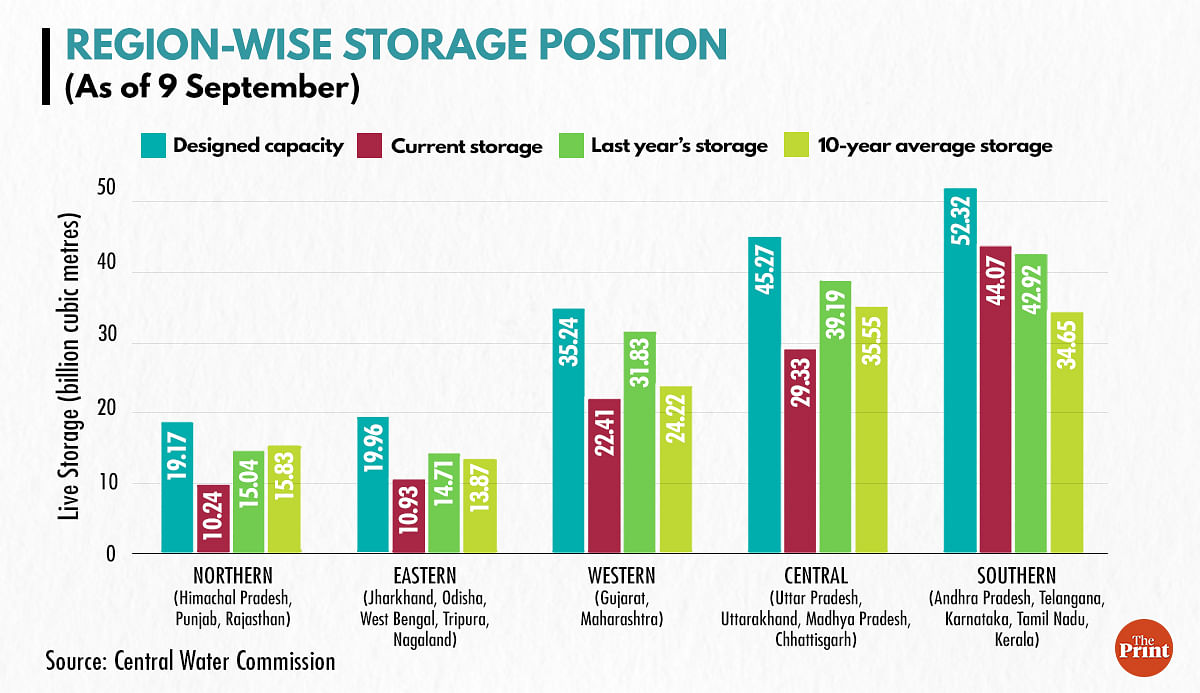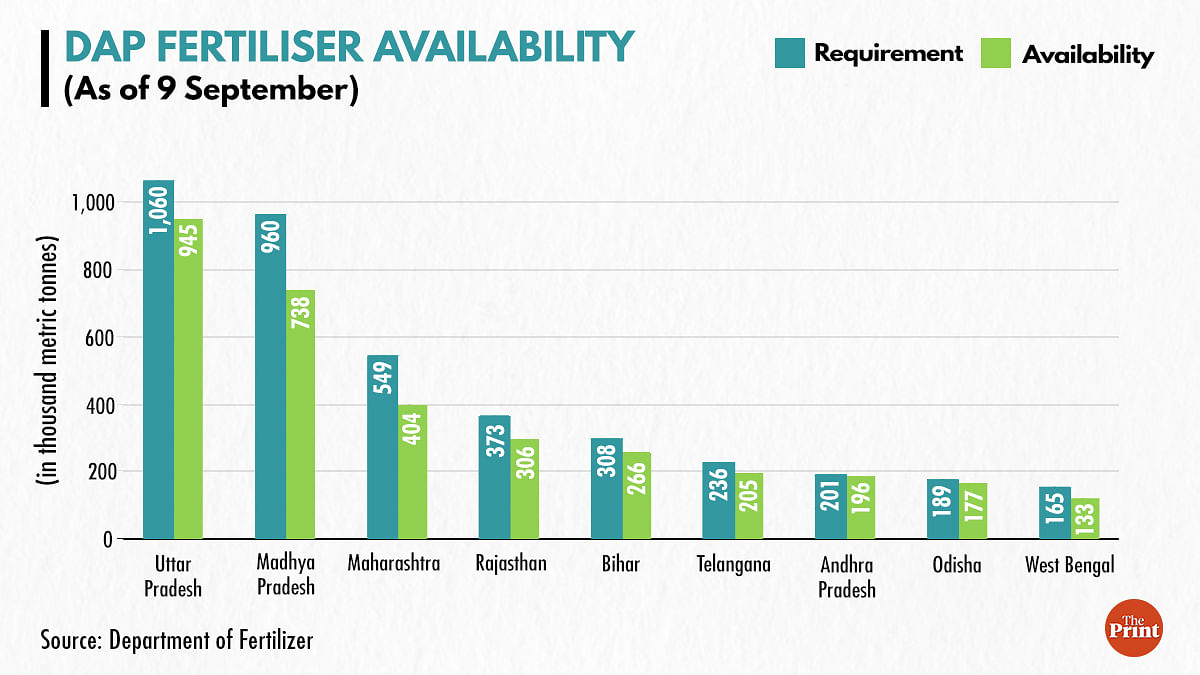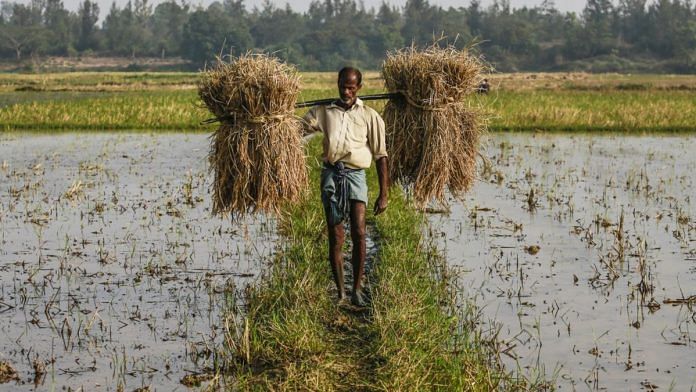New Delhi: The low reservoir levels due to deficit rainfall this year could affect the rabi sowing season from October-November.
This crisis is likely to be further aggravated due to the depletion of stocks of Di-ammonium phosphate (DAP) — the second-largest consumed fertiliser in the country after urea — and other major fertilisers.
The water level in reservoirs across major agrarian states such as Uttar Pradesh, Madhya Pradesh, Gujarat, Punjab, Maharashtra and Rajasthan has plunged due to deficit monsoon rainfall across the country.
Meanwhile, there has been a shortage of fertilisers because of disruption in the global supply and logistic chain caused by the pandemic. This has also lead to a rise in fertiliser prices globally.
According to reports, the increase in global prices has resulted in India lowering its imports, leading to further depletion of fertiliser stocks in the country.
This crisis threatens to hamper the sowing of rabi crops in states that are largely dependent on soil moisture and water availability in reservoirs, unlike the Kharif crop, which is largely irrigated through monsoon rainfall.
The predicament involving the future of rabi crops comes on the backdrop of an already acreage shortfall in kharif crops across the country.
Also read: Modi govt hikes rabi crops’ MSP, pulses and oilseeds see bigger jumps than wheat
Reservoir levels alarming
According to the reservoir storage bulletin of 9 September, the storage available in 130 reservoirs across the country is just 81 per cent of the storage of the corresponding period last year and 94 per cent of storage of the average of the last 10 years.

The scenario is grim as the reservoir levels in almost all regions of the country, except South, are below last year’s level, and lower than the average storage of the last 10 years.
A report by financial services Credit Suisse also pointed out that the challenge, in case the recent pick-up in rains does not last, would be soil moisture and low reservoir levels.
According to the bulletin, major agricultural states such as Odisha, Punjab, Uttar Pradesh, Madhya Pradesh and Gujarat have witnessed a departure from the normal rainfall by more than 20 per cent this year. The situation is particularly dire in Gujarat and the Saurashtra region, which have witnessed a deficit of 43 and 35 per cent, respectively.
Major agricultural powerhouse states like Punjab, which is the largest producer of wheat, had a deficit of 25 per cent.

Shashi Shekhar, former secretary, Ministry of Water Resources and Ganga Rejuvenation, told ThePrint, “As reservoirs are not full, it means the area doesn’t have soil moisture. Agriculture will suffer from two concerns: first, the inadequacy of water in reservoirs will not be able to support cropping. Second, since the soil is not moist enough, adequate groundwater is also not available. So major crops such as wheat will not get required water.’
He added the long-term solution lies in changing the cropping pattern.
Fertiliser shortage
This crisis has been further worsened due to a shortage of DAP fertiliser.
According to the latest data from the department of fertilisers, the maximum DAP shortfall — around 24 per cent — has been registered in Madhya Pradesh, a state which is not just the leading producer of rabi foodgrain wheat but also a major producer of principal rabi pulses and oilseeds such as gram and mustard.
The fertiliser shortage is also severe in states such as Maharashtra and West Bengal which have a shortage of at least 20 per cent in DAP availability against the requirement.

Moreover, there is also a shortage of Muriate of Potash (MOP) in many states such as UP, Telangana, West Bengal and Jharkhand amongst others. Major agricultural states like UP have a MOP deficit of almost 12 pe rcent ahead of rabi sowing with a deficit.
Rabi crops, which include major pulses and oilseed crops such as gram and mustard, have already witnessed severe inflation this year as the country was hit by the second wave of the Covid-19 pandemic. While mustard oil prices have skyrocketed beyond Rs 200 per litre, various pulses prices also witnessed an exponential increase, forcing the government to withdraw them from its pandemic relief-free food scheme.
Also read: Flat prices, late payments, rising costs — why western UP’s sugarcane farmers are in crisis



